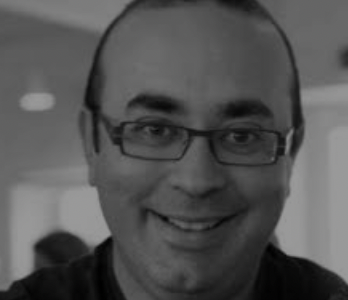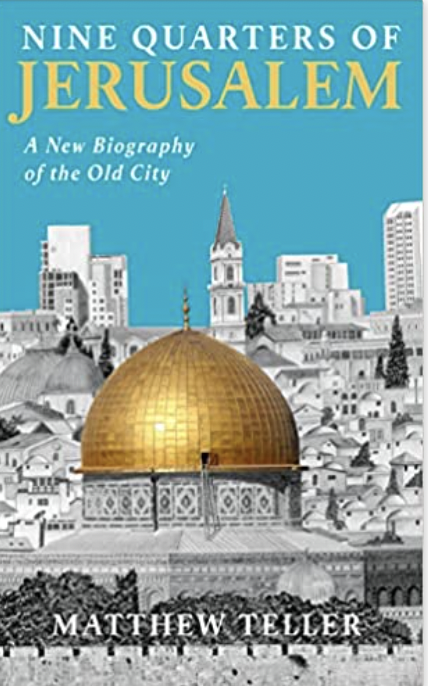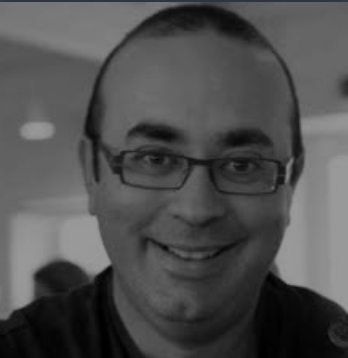
A new history of Jerusalem disputes simplistic divisions


In Jerusalem, what you see and what is true are two different things, as maps divide the walled Old City into four quarters, yet the division doesn’t reflect the reality of mixed and diverse neighborhoods. Beyond the crush and frenzy of its major religious sites, much of the Old City remains little known to visitors, its people overlooked and their stories untold. Nine Quarters of Jerusalem lets the communities of the Old City speak for themselves. Ranging through the ancient past and political present, it evokes the city’s depth and cultural diversity.
Nine Quarters features not only the Old City’s Palestinian and Jewish communities but also spotlights its Indian and African populations, its Greek and Armenian and Syriac cultures, its downtrodden Dom Gypsy families, and its Sufi mystics. It discusses the sources of Jerusalem’s holiness and the ideas – often startingly secular – that have shaped lives within its walls. It is an evocation of place through the story, led by the voices of Jerusalemites.
The Wall, known as the Kotel in Hebrew, is part of the retaining wall that surrounded the First and Second Temples, the holiest sites in Judaism, destroyed by the Babylonians, and the Romans. In their place are the al-Aqsa mosque and the Dome of the Rock, two of Islam’s most sacred sites. The nearby Church of Holy Sepulchre is believed by many to be the site of Jesus’s crucifixion and burial. Today, three main Abrahamic faiths ferociously guard their slivers of territory within this historic area. The middle of the crowded ancient city, surrounded by a maze of alleys and courtyards. Maps now divide the Old City into four historic quarters, Muslim, Christian, Armenian and Jewish. Matthew Teller’s biography of the Old City of Jerusalem points out that no Ottoman-ruled city (as Jerusalem was until 1917) would have a “Muslim quarter”. Teller blames Reverend Robert Willis, a Cambridge academic who never even visited Jerusalem but helped delineate a poorly defined ma published in 1849, and later used by 19th-century Protestant missionaries, that became a standard work of reference.
Plaza by the Western Wall was once home to a thriving, 700-year-old area known as the Haret al-Maggharba, or the Maghrebi ( North African) quarter, which included houses, shops and mosques. In June 1967, Israel captured the eastern half of Jerusalem and the Old City from Jordan, including the Haret al-Magharba. The entire city was now under Israeli control. Within days, the bulldozers, and demolition squads arrived. The Haret al-magharba simply vanished. Nazmi al-Jubeh, a former resident said “ The fig and pomegranate trees are gone, and sow ere the alleys I used to walk and play in”.
Today the Plaza is the epicenter of modern Zionism, up to 60,000 people can gather here for mass swearing-in ceremonies to the army or border police, and huge crowds mass to celebrate Jewish religious holidays.
Teller said: “ the rebuilt modern Jewish quarter as a “Westernised, upmarket residential enclave”. The real tragedy is that it had to be rebuilt at all. In 1948, during the Israeli War of Independence, which the Palestinians call the Nakba or “Catastrophe”, the Jordanians captured the ancient Jewish quarter. The Jews were expelled, and their homes, shops, and synagogues were systematically demolished. For the Arab conquerors, there could be no record of many centuries of a Jewish presence.
Teller highlights many obscure treasures in the Old City, from the hidden synagogue of the Karaites, a centuries-old branch of Judaism, to Sufi shrines, tiny museums, and Armenian artisans’ workshops.
Each year, around this time, Jewish families and their Passover meal with the prayer, “ Next year in Jerusalem”. Jerusalem is holy to Christians and Muslims, but it is also the city of King David and Solomon who, around 3, 000 years ago, turned a once provincial city into the thriving capital of an empire. The Old City and its surrounds is inhabited by American-Jewish immigrants who buy out or use Israeli law to evict – their Arab neighbours, believing they have a divine mission to re-Judaise the city.
Nine Quarters of Jerusalem: A New Biography of the Old City by Matthew Teller, Profile Books £16.99/ Other Press $27.99, 400 pages.
